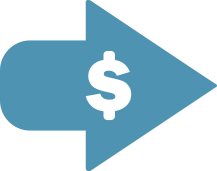- THE WORLD OF PRIVATE LOANS
- CREDIT
- MANAGING YOUR MONEY
- BORROWER BENEFITS
The World of Private Loans
Not all private student loans are created the same. Compare the details of different loan products to ensure you apply for the best loan for you.
Interest Rates
When banks lend you money, they also charge you interest, which begins to accumulate as soon as you receive the loan. When it's time to pay back a loan, you have to pay back the amount you borrowed plus interest.
Fixed or Variable?
Interest rates can be fixed at a specific rate for the entire life of a loan, or they can be variable. Some private student loans have variable rates, meaning the interest rates change at regular intervals (such as once a year). This means your interest rate, and therefore your monthly payment, may increase or decrease over the life of your loan.
If you get a loan with a variable interest rate, note how often the rate is reset, when it is reset, and whether or not it has a maximum limit. For some loans, the interest rates are reset quarterly, while others are reset annually. Tracking rate changes helps ensure you aren't surprised by higher interest or changing payment amounts.
Incentives
For private student loans, some lenders offer incentives such as a lower interest rate if you make a certain number of payments on time or pay via a certain method such as automatic withdrawals from a checking or savings account. Try to take advantage of such incentives if available.
Fees
In addition to the interest you are charged for a loan, lenders may also charge you various fees at different times. These fees should be taken into consideration along with the interest rate when determining the actual cost of a loan.
up-front fees

Up-front fees, such as origination fees, are charged immediately when the loan is made.
For example, say the lender charges a 1.5% origination fee. If you have a $10,000 loan, this 1.5% fee (equal to $150) is subtracted from the amount of the loan. This means you'll actually receive $9,850 but will have to repay the original $10,000 amount plus all accrued interest.
back-end fees

Back-end fees, such as repayment fees, are charged just prior to when you begin repayment.
For example, say the lender charges a 3% repayment fee. If you have a $10,000 loan, this 3% fee (equal to $300) is added to the principal balance of the loan before you begin repayment. This means you'll be repaying $10,300 plus all accrued interest.
The Choice is Yours
Can I apply for any private loan I want?
Please answer the question above before continuing.
